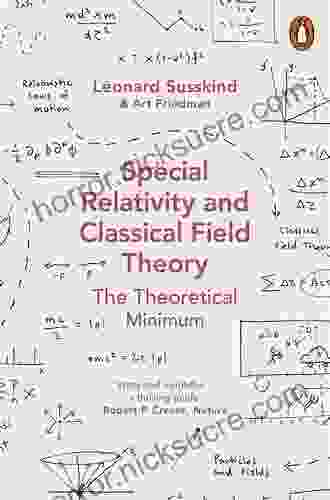Special Relativity and Classical Field Theory: Unifying Two Cornerstones of Physics

In the vast tapestry of physics, two monumental frameworks—special relativity and classical field theory—have emerged as indispensable cornerstones. Special relativity, the brainchild of Albert Einstein, revolutionized our understanding of space, time, and motion, while classical field theory laid the foundation for describing electromagnetic and gravitational forces. While seemingly distinct, these two theories exhibit a deep interconnectedness, giving rise to a unified picture of the universe.
4.7 out of 5
| Language | : | English |
| File size | : | 25091 KB |
| Text-to-Speech | : | Enabled |
| Screen Reader | : | Supported |
| Enhanced typesetting | : | Enabled |
| X-Ray | : | Enabled |
| Word Wise | : | Enabled |
| Print length | : | 460 pages |
The Essence of Special Relativity
Einstein's special relativity shattered the classical paradigm of absolute space and time, introducing the concept of spacetime as a malleable continuum. According to special relativity, the laws of physics are the same for all observers moving at constant velocities. This invariance principle has far-reaching consequences, leading to time dilation, length contraction, and the equivalence of mass and energy (E=mc2).
A cornerstone of special relativity is the Lorentz transformation, which describes how space and time coordinates change between different inertial frames. This transformation reveals that the speed of light in a vacuum is constant for all observers, regardless of the motion of the light source or observer. This constant velocity forms the upper limit of the universe, setting a fundamental constraint on all physical phenomena.

The Power of Classical Field Theory
Classical field theory provides a mathematical framework for describing forces that act over distances. The most prominent examples are electromagnetism and gravitation. In electromagnetism, the electromagnetic field is a vector field that describes the electric and magnetic forces exerted between charged particles. Similarly, in gravitation, the gravitational field is a tensor field that describes the force of attraction between masses.
Classical field theories are governed by differential equations, such as Maxwell's equations for electromagnetism or Einstein's field equations for gravitation. Solving these equations allows physicists to predict the behavior of forces and fields in a given system.
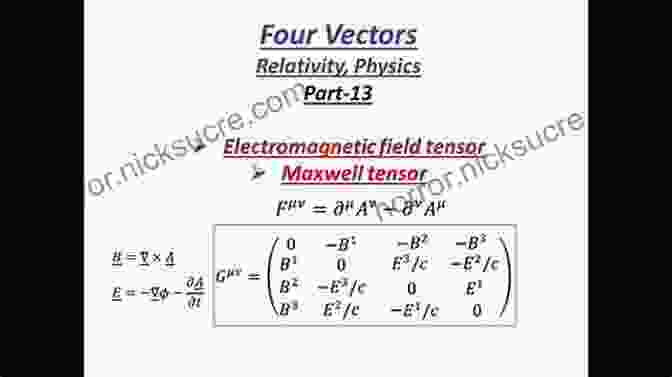
Unifying Relativity and Field Theory
The unification of special relativity and classical field theory occurred through the work of Max Born and Hermann Minkowski in the early 20th century. They recognized that the spacetime continuum of special relativity could be expressed as a four-dimensional manifold, known as Minkowski spacetime. This allowed classical field theories to be formulated in a relativistic context, describing forces and fields in a spacetime framework.
The resulting theory, known as relativistic field theory, provided a unified description of forces and fields in a spacetime continuum. It successfully explained phenomena such as the bending of light in gravitational fields (gravitational lensing) and the existence of gravitational waves.

Applications of Relativistic Field Theory
Relativistic field theory has had a profound impact on physics, leading to advances in cosmology, particle physics, and astrophysics. In cosmology, it provides the framework for understanding the expansion and evolution of the universe. In particle physics, it forms the basis for the Standard Model, which describes the fundamental particles and forces of nature. In astrophysics, it enables the study of black holes, neutron stars, and other extreme phenomena under the influence of strong gravitational fields.
The convergence of special relativity and classical field theory has transformed our understanding of the physical world. By unifying space, time, and forces into a single theoretical framework, we have gained a deeper insight into the fundamental nature of reality. This unified approach has led to groundbreaking discoveries and continues to drive the progress of physics, unlocking the secrets of the cosmos and shaping our technological advancements.
As we delve deeper into the mysteries of the universe, the interplay between special relativity and classical field theory remains a guiding light, illuminating the interconnectedness of space, time, and matter.
4.7 out of 5
| Language | : | English |
| File size | : | 25091 KB |
| Text-to-Speech | : | Enabled |
| Screen Reader | : | Supported |
| Enhanced typesetting | : | Enabled |
| X-Ray | : | Enabled |
| Word Wise | : | Enabled |
| Print length | : | 460 pages |
Do you want to contribute by writing guest posts on this blog?
Please contact us and send us a resume of previous articles that you have written.
 Fiction
Fiction Non Fiction
Non Fiction Romance
Romance Mystery
Mystery Thriller
Thriller SciFi
SciFi Fantasy
Fantasy Horror
Horror Biography
Biography Selfhelp
Selfhelp Business
Business History
History Classics
Classics Poetry
Poetry Childrens
Childrens Young Adult
Young Adult Educational
Educational Cooking
Cooking Travel
Travel Lifestyle
Lifestyle Spirituality
Spirituality Health
Health Fitness
Fitness Technology
Technology Science
Science Arts
Arts Crafts
Crafts DIY
DIY Gardening
Gardening Petcare
Petcare Peter Greyson
Peter Greyson Eva Robild
Eva Robild Dean R Giles
Dean R Giles Eileen Kennedy Moore
Eileen Kennedy Moore Emily Glickman
Emily Glickman Carol Devine
Carol Devine Eva Hoffman
Eva Hoffman Thomas W Miller
Thomas W Miller Terrence Talley
Terrence Talley Emma Walker
Emma Walker Michael S Kelly
Michael S Kelly Farley Mowat
Farley Mowat Colin Gordon
Colin Gordon Philip A Moore
Philip A Moore Eric Provan
Eric Provan Deborah Taylor Hough
Deborah Taylor Hough Kindle Edition
Kindle Edition Carol Walters
Carol Walters Brian M Conners
Brian M Conners Lizzy Bolan
Lizzy Bolan Casey Schreiner
Casey Schreiner John Biggar
John Biggar Jack Buck
Jack Buck John Henderson
John Henderson Seth A Roberts
Seth A Roberts Phil Jarratt
Phil Jarratt David Bain
David Bain Kim Vopni
Kim Vopni Lucy Cooke
Lucy Cooke Rosamund Hodge
Rosamund Hodge Kevin Johnson
Kevin Johnson Melissa Ford
Melissa Ford James Henry Breasted
James Henry Breasted C C Hunter
C C Hunter Dan Orr
Dan Orr Christian Smith
Christian Smith Tracy Tresidder
Tracy Tresidder John Fry
John Fry Patricia Leavy
Patricia Leavy Christy Teglo
Christy Teglo Natasha D Lane
Natasha D Lane Jacqueline Marcell
Jacqueline Marcell Edward Beauclerk Maurice
Edward Beauclerk Maurice Sarah Spencer
Sarah Spencer Rainbow Rowell
Rainbow Rowell John H Holland
John H Holland Stefanie Reinhold
Stefanie Reinhold Stephan A Hoeller
Stephan A Hoeller Catherine B Walker
Catherine B Walker Scott A Hatch
Scott A Hatch Chris Mcintyre
Chris Mcintyre Declan Lyons
Declan Lyons Emily Alison
Emily Alison Robert Page
Robert Page Huntley Fitzpatrick
Huntley Fitzpatrick Ricki Linksman
Ricki Linksman Mike Settele
Mike Settele Emma Mckinney
Emma Mckinney Sarah Miller
Sarah Miller Monica Swanson
Monica Swanson Melina Palmer
Melina Palmer Jon M Sweeney
Jon M Sweeney Rose Kearney Nunnery
Rose Kearney Nunnery Jo Boaler
Jo Boaler Bob Raynor
Bob Raynor Chuck Lukacs
Chuck Lukacs Alan Levinovitz
Alan Levinovitz Holly Parker
Holly Parker Shelby Evans
Shelby Evans Kristin Cashore
Kristin Cashore Ellen Galinsky
Ellen Galinsky Patti Jean
Patti Jean Harriet A Washington
Harriet A Washington Bill W
Bill W Maggie Kline
Maggie Kline Ellen Meloy
Ellen Meloy Roger Eckstine
Roger Eckstine Laura Hoggins
Laura Hoggins Sanjay Gupta
Sanjay Gupta Paul Bellow
Paul Bellow Zoe S
Zoe S Rosalie Knecht
Rosalie Knecht Bell Hooks
Bell Hooks Stephen K Hayes
Stephen K Hayes Glenn Randall
Glenn Randall Connie Zweig
Connie Zweig John Mandel
John Mandel Christy Mihaly
Christy Mihaly Rachael Denhollander
Rachael Denhollander Bernardo Kastrup
Bernardo Kastrup Rick Rinehart
Rick Rinehart Meghan Casey
Meghan Casey Nancy Mohrbacher
Nancy Mohrbacher Hansa Bhargava
Hansa Bhargava Vinny Berry
Vinny Berry Ben Hoppe
Ben Hoppe Joy Hendry
Joy Hendry David Jeremiah
David Jeremiah Michael Pollan
Michael Pollan Knowledge Flow
Knowledge Flow Scott Imhoff Phd
Scott Imhoff Phd Lelah Sullivan
Lelah Sullivan Rich Roll
Rich Roll Martin Lee Abbott
Martin Lee Abbott Don L Gates
Don L Gates Edward O Wilson
Edward O Wilson Ben Smith
Ben Smith Jo Carol Claborn
Jo Carol Claborn John D Barrow
John D Barrow Kurt Jacobs
Kurt Jacobs Chris Batha
Chris Batha Peter L Berger
Peter L Berger Scott Wilson
Scott Wilson Vivienne Edgecombe
Vivienne Edgecombe Behan Gifford
Behan Gifford Glenn Bartley
Glenn Bartley Shelia Craig Whiteman Pt Dpt Clt
Shelia Craig Whiteman Pt Dpt Clt Liz Robbins
Liz Robbins T L Christianson
T L Christianson Nancy Redd
Nancy Redd Chanda Hahn
Chanda Hahn Patricia B Mcconnell
Patricia B Mcconnell Peter Isler
Peter Isler Lauren Wells
Lauren Wells Graham Burgess
Graham Burgess Benjamin Smith
Benjamin Smith Phil Davies
Phil Davies Frank Ayres
Frank Ayres Meghan Mccarthy
Meghan Mccarthy Makiia Lucier
Makiia Lucier Gerard Taylor
Gerard Taylor David Rynecki
David Rynecki Gaby Melian
Gaby Melian Lisa Rene Reynolds Phd
Lisa Rene Reynolds Phd Sally Moran
Sally Moran James Blake
James Blake Percy Keese Fitzhugh
Percy Keese Fitzhugh Bethany Warren
Bethany Warren S Connolly
S Connolly Stephen Smith
Stephen Smith Martijn Konings
Martijn Konings Olivia Longray
Olivia Longray Stuart James Amei
Stuart James Amei Julie L Hall
Julie L Hall Lizzie Lane
Lizzie Lane Catherine White
Catherine White Peggy J Martin
Peggy J Martin Joe Farinaccio
Joe Farinaccio Benjamin Southerland
Benjamin Southerland Lsatmax Lsat Prep
Lsatmax Lsat Prep Gerad Kite
Gerad Kite Richard Dawkins
Richard Dawkins Carla Killough Mcclafferty
Carla Killough Mcclafferty Timothy Gowers
Timothy Gowers Print Replica Kindle Edition
Print Replica Kindle Edition Simon Armitage
Simon Armitage Kate Williams
Kate Williams Dudley Wright
Dudley Wright Oleg Senkov
Oleg Senkov Peter Gieler
Peter Gieler Daniel Muijs
Daniel Muijs Paul Dolan
Paul Dolan Clifford Geertz
Clifford Geertz Stan Byrdy
Stan Byrdy Oliver Sacks
Oliver Sacks Mitch Terrusa
Mitch Terrusa William J Callaway
William J Callaway Beth Reekles
Beth Reekles Peter Rendell
Peter Rendell Gwen Bettwy
Gwen Bettwy John C Lundell
John C Lundell Kevin Easley
Kevin Easley Tamarack Song
Tamarack Song Kayla Small
Kayla Small Molly Mills
Molly Mills Bernadette Mcdonald
Bernadette Mcdonald Tomoko Fuse
Tomoko Fuse Nicola Griffith
Nicola Griffith Evelyn Underhill
Evelyn Underhill Debbie Marks
Debbie Marks Joshua Rodriguez
Joshua Rodriguez Rohan Agarwal
Rohan Agarwal Maggie Oakes
Maggie Oakes Jeremy Lent
Jeremy Lent Heather Davis
Heather Davis Haya Leah Molnar
Haya Leah Molnar Stephen Jenkinson
Stephen Jenkinson Brent Majcher
Brent Majcher Cathy Jackson
Cathy Jackson John Huggan
John Huggan Ben Worthington
Ben Worthington Deanna Raybourn
Deanna Raybourn Joline Godfrey
Joline Godfrey David Quammen
David Quammen Howard Burton
Howard Burton Tim Tebow
Tim Tebow Educational Testing Service
Educational Testing Service Joseph Ciarrochi
Joseph Ciarrochi John Dickie
John Dickie Deborah D Gray
Deborah D Gray Barry King
Barry King Craig Childs
Craig Childs Tony Horwitz
Tony Horwitz Nsca National Strength Conditioning Association
Nsca National Strength Conditioning Association Christine Desdemaines Hugon
Christine Desdemaines Hugon Laura Bashar
Laura Bashar Bill Hanstock
Bill Hanstock Mike Veny
Mike Veny Troy Horne
Troy Horne Shelley C Safian
Shelley C Safian Virginia Smith Harvey
Virginia Smith Harvey John Taylor
John Taylor Phil Martin
Phil Martin David Lawson Phd
David Lawson Phd Izaak Walton
Izaak Walton John Branch
John Branch Helen Leigh
Helen Leigh Christy Dorrity
Christy Dorrity Ben Gillman
Ben Gillman Roger Fredericks
Roger Fredericks Esther Hicks
Esther Hicks Bella Bathurst
Bella Bathurst Kyle Simpson
Kyle Simpson Scott Wetzler
Scott Wetzler Robert W Smith
Robert W Smith Rowan Ellis
Rowan Ellis Kim John Payne
Kim John Payne John E Eck
John E Eck Sarah Maclean
Sarah Maclean Julie Urbanski
Julie Urbanski Leia Stone
Leia Stone Rich Johnson
Rich Johnson David Estes
David Estes Lawrence J Cohen Phd
Lawrence J Cohen Phd Scott Wallace
Scott Wallace Janisse Ray
Janisse Ray Khoi Tu
Khoi Tu Phil Stamper
Phil Stamper Ethan Sawyer
Ethan Sawyer Patricia Hachten Wee
Patricia Hachten Wee Maria Kriya
Maria Kriya Lou Kasischke
Lou Kasischke Sona Charaipotra
Sona Charaipotra The Mountaineers
The Mountaineers Henri De Lestapis
Henri De Lestapis T Edward Nickens
T Edward Nickens Rebecca Collins
Rebecca Collins Bernard Lewis
Bernard Lewis Bernadette Noll
Bernadette Noll Jordan Rivet
Jordan Rivet Brett Cyrgalis
Brett Cyrgalis Brigid Kemmerer
Brigid Kemmerer Janice K Ledford
Janice K Ledford Bertil Gustafsson
Bertil Gustafsson Nicholas Griffin
Nicholas Griffin Eliza Hof
Eliza Hof Rick Wiebe
Rick Wiebe W David Pierce
W David Pierce Susan Wildes
Susan Wildes Zecharia Sitchin
Zecharia Sitchin Mario Cardano
Mario Cardano Thomas Norman Dewolf
Thomas Norman Dewolf Gooseberry Patch
Gooseberry Patch David Barrie
David Barrie Hillary Sadler
Hillary Sadler Dennis Fisher
Dennis Fisher Nate Summers
Nate Summers Christina Hitchcock
Christina Hitchcock Rough Guides
Rough Guides Prof Dr Wa Liebenberg
Prof Dr Wa Liebenberg Jill H Rathus
Jill H Rathus Theresa Bane
Theresa Bane Christian Beamish
Christian Beamish Lori Ashley Taylor
Lori Ashley Taylor Roxanne Reid
Roxanne Reid Mindy Cockeram
Mindy Cockeram Lisa Mckay
Lisa Mckay Laurence S Moy
Laurence S Moy Heroes Of The Art
Heroes Of The Art Will Wraxall
Will Wraxall Steven Rinella
Steven Rinella Denise Gaskins
Denise Gaskins Les Carter
Les Carter Naomi Steiner
Naomi Steiner Troy Treasure
Troy Treasure Malin Gutestam
Malin Gutestam Albert S Tarendash
Albert S Tarendash Adam Griffith
Adam Griffith Dorian Gerhold
Dorian Gerhold Peter Brown Hoffmeister
Peter Brown Hoffmeister Dan R Lynch
Dan R Lynch Jessica Misener
Jessica Misener Lene Fogelberg
Lene Fogelberg Will Oxley
Will Oxley Drew Estell
Drew Estell Erin Eileen Leigh
Erin Eileen Leigh David Diaz
David Diaz Matt Jacobson
Matt Jacobson Justin Roethlingshoefer
Justin Roethlingshoefer Nicola Morgan
Nicola Morgan Brandon Sanderson
Brandon Sanderson Jenson Button
Jenson Button T L Branson
T L Branson John R Bruning
John R Bruning Adam Stevens
Adam Stevens James Allen
James Allen Art Friedman
Art Friedman Sharon Bergen
Sharon Bergen Rui Zhi Dong
Rui Zhi Dong Larry Gabe
Larry Gabe Lesley Pyne
Lesley Pyne Eliza Larson
Eliza Larson Bill Jamison
Bill Jamison Mike Brown
Mike Brown Deborah Blum
Deborah Blum Greg Schwipps
Greg Schwipps Benjamin Johnston
Benjamin Johnston Elizabeth Verdick
Elizabeth Verdick Jonathan Knight
Jonathan Knight Mary V Solanto
Mary V Solanto Lebawit Lily Girma
Lebawit Lily Girma Joel Hooks
Joel Hooks Jay Kirk
Jay Kirk Jeff Ramey
Jeff Ramey Nick Price
Nick Price Ashley Lecker
Ashley Lecker Blandine Calais Germain
Blandine Calais Germain Valentin Nugmanov
Valentin Nugmanov Len Mcdougall
Len Mcdougall Lawrence Baldassaro
Lawrence Baldassaro Linda Spatig
Linda Spatig Joe Baird
Joe Baird Matthew Stein
Matthew Stein Kris Wilder
Kris Wilder Budd Coates
Budd Coates Kara Richardson Whitely
Kara Richardson Whitely Karen J Rooney
Karen J Rooney Leonard Mlodinow
Leonard Mlodinow Maggie Dent
Maggie Dent Sherry Turkle
Sherry Turkle Sandy Glenn
Sandy Glenn Sarah Elizabeth Richards
Sarah Elizabeth Richards Clifford E Trafzer
Clifford E Trafzer Tracy Lash Decrosta
Tracy Lash Decrosta Ellen Schreiber
Ellen Schreiber Stanley Cohen
Stanley Cohen Colin Fletcher
Colin Fletcher Buck Collins
Buck Collins Holly Black
Holly Black Charlotte Mason
Charlotte Mason Jeff Grubb
Jeff Grubb Santari Green
Santari Green Jamie C Martin
Jamie C Martin Portia Iversen
Portia Iversen Mark Lutz
Mark Lutz Joe Baker
Joe Baker Stephanie Baier
Stephanie Baier Catherine Faherty
Catherine Faherty Bertrand Russell
Bertrand Russell Tony Frezza
Tony Frezza Prem Carnot
Prem Carnot Theodore Gray
Theodore Gray Nadine Slavinski
Nadine Slavinski Nathan Doneen
Nathan Doneen Ilya Grigorik
Ilya Grigorik Blythe Lucero
Blythe Lucero Jean Louis Vidal
Jean Louis Vidal Hannah Witton
Hannah Witton Mark Csikszentmihalyi
Mark Csikszentmihalyi Rachel Ann Cullen
Rachel Ann Cullen Ahlia Rose
Ahlia Rose Jeremy Griffith
Jeremy Griffith Charlotte Mary Yonge
Charlotte Mary Yonge Ben Crawford
Ben Crawford Michael P Nordvall
Michael P Nordvall Editors Of Martha Stewart Living
Editors Of Martha Stewart Living Shanterra Mcbride
Shanterra Mcbride Bob Hazard
Bob Hazard Wesley C Salmon
Wesley C Salmon Steve Schwartz
Steve Schwartz Gerald G Briggs
Gerald G Briggs Stacey Barrett
Stacey Barrett Josh Gates
Josh Gates Ben O Williams
Ben O Williams Leila Kalmbach
Leila Kalmbach Brian Sparks
Brian Sparks Ken M Harrison
Ken M Harrison L T C Rolt
L T C Rolt Tom Dodd
Tom Dodd Marian L Tupy
Marian L Tupy Kiera Cass
Kiera Cass Sheila Lukins
Sheila Lukins Lindsey Vonn
Lindsey Vonn William Cane
William Cane Fran Zimniuch
Fran Zimniuch Slavka Bodic
Slavka Bodic Fr Mike Driscoll
Fr Mike Driscoll George Daniel
George Daniel Si Sheppard
Si Sheppard Chris Cage
Chris Cage L H Stacey
L H Stacey Lucy Ruddle
Lucy Ruddle Department Of The Army
Department Of The Army Bruce Kirkby
Bruce Kirkby Tim Ingold
Tim Ingold Daniel Boyarin
Daniel Boyarin Kenneth R Miller
Kenneth R Miller Neil Iton
Neil Iton Darcy Kieran
Darcy Kieran Dan Inosanto
Dan Inosanto Molly Hurford
Molly Hurford Brian Reddington
Brian Reddington Octavia Steen
Octavia Steen William C Oakes
William C Oakes Lawrence Wright
Lawrence Wright David Sadker
David Sadker Jonathan Wolf
Jonathan Wolf Chris Conley
Chris Conley Kent Allen
Kent Allen Jaimal Yogis
Jaimal Yogis Sandra Brown
Sandra Brown Cokie Roberts
Cokie Roberts Bb Easton
Bb Easton Christopher Hill
Christopher Hill Frank Galli
Frank Galli Elaine Stillerman
Elaine Stillerman Vasile Berinde
Vasile Berinde David Robson
David Robson Charles E Farhadian
Charles E Farhadian Stefanie Molin
Stefanie Molin Margaret E Murie
Margaret E Murie Lawrence S Leff
Lawrence S Leff Melissa De La Cruz
Melissa De La Cruz Ciara Attwell
Ciara Attwell Beth Baker
Beth Baker Suzanne Bender
Suzanne Bender Jane Bottomley
Jane Bottomley John J Watkins
John J Watkins Stephen Renwick
Stephen Renwick Mikki Morrissette
Mikki Morrissette Richard G Lomax
Richard G Lomax John Grasso
John Grasso Dave Rearwin
Dave Rearwin Tiffany Vincent
Tiffany Vincent Joe Clement
Joe Clement Kelli L Ferguson
Kelli L Ferguson Kalliope Barlis
Kalliope Barlis Gary Oberg
Gary Oberg
Light bulbAdvertise smarter! Our strategic ad space ensures maximum exposure. Reserve your spot today!
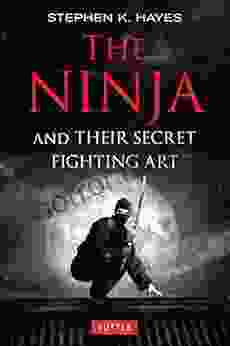
 Amir SimmonsThe Ninja and Their Secret Fighting Art: Unraveling the Enigmatic World of...
Amir SimmonsThe Ninja and Their Secret Fighting Art: Unraveling the Enigmatic World of...
 William PowellThe Kissing Booth: A Comprehensive Journey into Beth Reekles' Beloved Story
William PowellThe Kissing Booth: A Comprehensive Journey into Beth Reekles' Beloved Story
 Junichiro TanizakiAn Emotional Historical Family Saga: Journey Through the Sweet Sisters...
Junichiro TanizakiAn Emotional Historical Family Saga: Journey Through the Sweet Sisters... Forrest BlairFollow ·16.4k
Forrest BlairFollow ·16.4k Jermaine PowellFollow ·3.3k
Jermaine PowellFollow ·3.3k Arthur C. ClarkeFollow ·5.7k
Arthur C. ClarkeFollow ·5.7k Henry HayesFollow ·10k
Henry HayesFollow ·10k Kendall WardFollow ·15.2k
Kendall WardFollow ·15.2k Jeffery BellFollow ·7.4k
Jeffery BellFollow ·7.4k Walter SimmonsFollow ·15.5k
Walter SimmonsFollow ·15.5k Billy PetersonFollow ·10.5k
Billy PetersonFollow ·10.5k

 Matt Reed
Matt ReedStudying for Your Policing Degree: Critical Study Skills...
Pursuing a policing degree...

 Mike Hayes
Mike HayesHeal Your Heart, Build Trust, & Better Connections To...
In this article,...
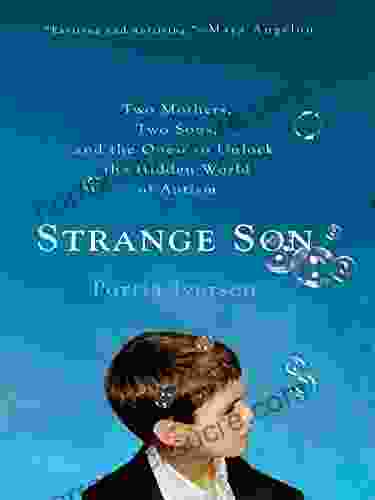
 Drew Bell
Drew BellTwo Mothers, Two Sons, and the Quest to Unlock the Hidden...
When their sons were diagnosed with...

 Bobby Howard
Bobby HowardUnveiling the Rivkah Remnant: Lou Kasischke's Unwavering...
In the tapestry of Christian history,...
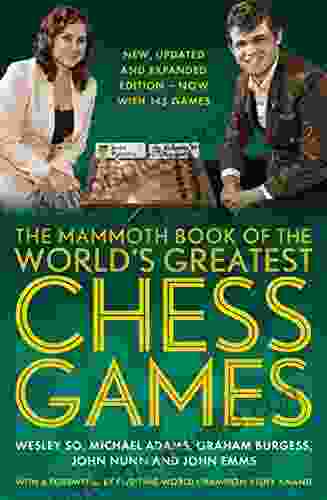
 Alex Foster
Alex FosterThe Mammoth of the World's Greatest Chess Games: An...
Chess, a game of strategy, intellect,...
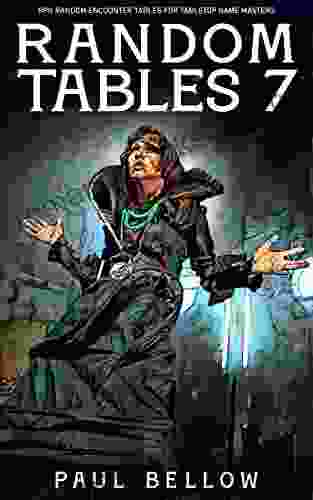
 Aldous Huxley
Aldous HuxleyRandom Tables Fantasy RPG: Random Encounter Tables for...
In the vast tapestry of tabletop role-playing...
4.7 out of 5
| Language | : | English |
| File size | : | 25091 KB |
| Text-to-Speech | : | Enabled |
| Screen Reader | : | Supported |
| Enhanced typesetting | : | Enabled |
| X-Ray | : | Enabled |
| Word Wise | : | Enabled |
| Print length | : | 460 pages |


